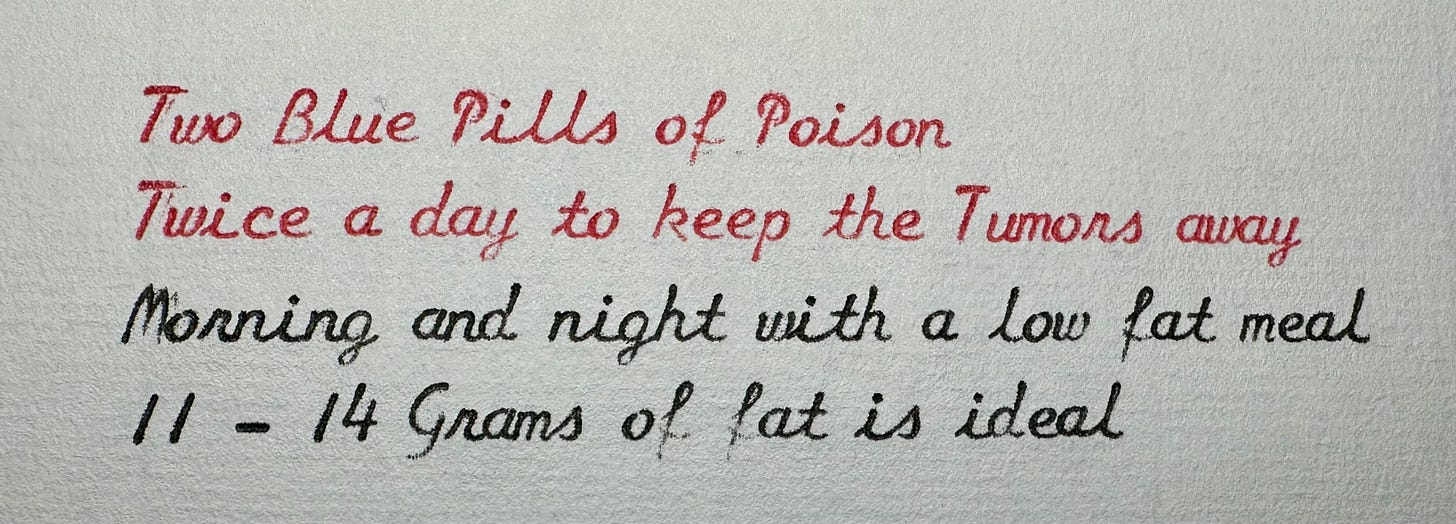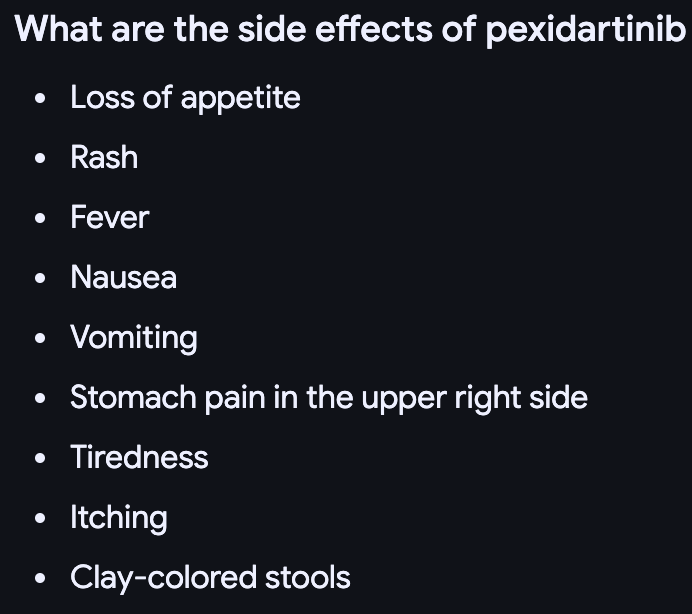A Letter For 2 Unknown Souls
And the 2 Little Blue and White Pills I Take Morning and Night
I’m normally awake before anyone else in my house. I’ve grown to love those moments of calm and darkness around 6am. I like to make my way downstairs and sit at my coffee bar on one of our mid-century modern cow-themed stools and light a few candles. That glowing orange flicker is the right vibe in those morning moments, it’s easier for the eyes to adjust too and welcomes a thoughtful mind.
I’ve become accustomed to laying out a 24x18 inch mixed media pad of paper, grabbing a few copic markers and these beautiful Japanese Kuretake Bimoji Brush Pen, and writing out my thoughts and reflections as a sort of meditation to start my day. This practice started about a year ago when I couldn’t find a notebook and needed something quick on a call and behind the coffee bar I kept the large mixed media pad, so I grabbed it quickly and started scribbling down notes for a meeting.
The sheer size of the page and blankness feels like a playground for my mind - I’ve always been a doodler and note taker. It’s my purest expression of my thoughts in a moment.
This morning, as so happens every 6 months or so, my routine changed. Today was the day that I cycled back onto my medication to control my TGCT tumors in my right ankle that I wrote about yesterday. The medication forces a routine change - I have to take my 2 pills every morning and evening (12 hours apart) with a small low fat meal.
The fat content in this meal is important because it makes all the difference in how the drug is absorbed into my body. Too much fat and I absorb too much of the drug, too little and my body doesn’t get enough. I’m also supposed to wait 2 hours after I eat this meal to eat anything further.
It’s not too crazy of a routine but it’s certainly far more rigorous than a typical dietary routine.
The drug’s fancy marketing name is Turalio, it’s less interesting but maybe more fun name is Pexidartinib. It’s an antitumor agent that is a selective tyrosine kinase inhibitor that works by inhibiting the colony-stimulating factor (CSF1)/CSF1 receptor pathway. Basically it prevents the cells in my body from being able to activate their replication mode and regrow tissue beds.
This is an amazing thing. The story of Pexidartinib is uniquely woven into my journey with these tumors over the last 10 years. When I first was diagnosed no such drug existed, like not at all. The idea of this drug didn’t even exist. It stayed that way until about 2017. By that time we were living in Los Angeles and my treatment had moved to UCLA where I got connected to a TGCT specialist, an orthopaedic oncologist named Dr. Bernthal.
Dr. Bernthal had a special bond - he played basketball at Princeton and ran the Princeton basketball system just like I did at Air Force (Go Falcons). He also was the leading board member on a study on a new set of selective inhibitor drugs that were targeting rheumatoid arthritis. One of those drugs in the earliest study did something magical that they hadn’t expected - it reduced PVNS/TGCT tumors in a few patients that had rheumatoid arthritis BECAUSE of PVNS/TGCT tumors. It was literally a fluke.
Dr. Bernthal was so interested in this that he raised his hand to lead the research into the drug and using it for this use case. He told me early on that he had to tell me that he was given a financial stake in the success of this research if it proved meaningful and they could get the drug to market. Good capitalism at its finest.
Dr. Bernthal told me to hang tight and that in 2-3 years they may be able to go through trials and get the drug into my hands as I was a perfect candidate based on my tumor cells’ biology. In the meantime Dr. Bernthal had to perform a second surgery to remove tumors. In just over a year from my first tumor excision, the tumors had grown back. Not quite as large this time, but pretty damn big for the timeframe.
He told me that he hoped that I wouldn’t need surgery again. By early 2018 he gave me a semi-positive outlook on the trials - about 50 patients were able to start a stage 3 trial (it’s hard to find 50 PVNS/TGCT patients - we are a rare bunch and I’ve actually never met or talked to a single other person with it). The early results were promising - about 50% of the participants showed profound decreases in tumor size. The only bad part was that two people in the study passed away and they linked the deaths to the drug and hepatotoxicity of the liver.
In short, the drug is extremely hard on the liver to process, it’s toxic. So toxic it can cause severe liver damage in just 3-4 weeks. It also causes some pretty severe side effects:
To add to this it basically degrades your skin and hair and nail cells - hence the translucent looking skin and hair you’ve seen in previous photos of me.
I’m giving you this context because it’s important. Why you ask?
2 people died testing this drug. They literally made the ultimate sacrifice so that I could benefit.
I can’t ever forget that fact. I owe those people dearly.
My ankle is still functioning and a part of my body because of those people. I’ll never know their names or anything about who they were or what they did on this earth, but I know they existed and owe them a lot of gratitude.
The drug works for me and shrinks my tumors. It’s a miracle.
In 2015 when I was first diagnosed if I had looked 10 years ahead I didn’t have my right ankle. In fact, I spent time early on researching prosthetics and narrowing down the styles of ones I liked. I just sort of imagined my future as a cyborg with a robot foot and ankle.
The side effects I experience are actually pretty fucking annoying. My skin becomes extremely sensitive to hot and cold and wind and touch. A soft towel feels like sandpaper. If I’m exposed to the summer sun I can get 3rd degree burns and blister in less than an hour. Hot showers burn and luke warm water feels best but very unsatisfying. Cold wind shivers me to my bones. So it’s layers on layers in the winter and long sleeves and pants in the summer with lots of sunscreen.
I get nauseous sometimes and lose my appetite, and I definitely feel the fatigue as my body tries to process the poison for the first 6 weeks or so, then my body kind of figures it out.
When I look down at my hand with those 2 pills in it I face this weird cognitive dissonance.
I’m putting poison in my body, but it’s good for me. It’s so hard to describe to people that haven’t willingly made that choice a thousand+ times. It's… WEIRD.
But it allows me to still walk and run and play with my kids. I’ll take it.
I have so many people to thank and be grateful for when it comes to that.
The researchers and PhD students
The doctors
The drug company Daiichi Sankyo
The trial participants
The blood lab that monitors my blood
The pharmacy who delivers it to my doorstep
The nurses who do my feedback sessions and pass my data back to Daiichi Sankyo
But most of all those 2 unknown souls whose lives were cut short, the unlucky ones.
With love and deep appreciation,
-Andrew





🥺🥹